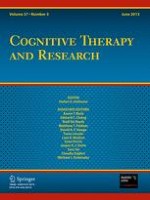01-06-2013 | Original Article
Attentional Bias in Insomnia: The Dot-Probe Task with Pictorial Stimuli Depicting Daytime Fatigue/Malaise
Gepubliceerd in: Cognitive Therapy and Research | Uitgave 3/2013
Log in om toegang te krijgenAbstract
The purpose of this study was to examine whether individuals with primary insomnia (PI) have an attentional bias towards insomnia-specific stimuli, relative to normal sleepers (NS). Also, the aim was to determine if the attentional bias was characterized by vigilance or disengagement. A between-groups, matched design was employed. Forty-two individuals completed the study (PI = 21; NS = 21). Participants completed a dot-probe task with stimuli comprising insomnia-specific (fatigue/malaise) and neutral pictures. It was hypothesized that individuals with PI would show greater attentional bias to insomnia-specific stimuli compared with NS. An overall bias effect was noted. This effect was however not due to vigilance; taking into account the reaction times on neutral trials, the PI group and the NS group did not display significantly different results in reaction times to insomnia-specific pictures. On the contrary, the results suggest that the overall bias effect was due to disengagement; the PI group had significantly longer reaction times than the NS group when shifting away from the insomnia-specific pictures, relative to neutral–neutral picture presentations. The findings suggest that individuals with insomnia are not more vigilant than normal sleepers to insomnia-specific stimuli, but instead have greater difficulties in shifting away from such stimuli.
